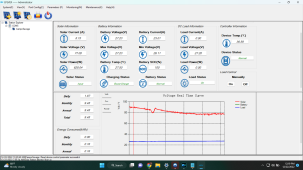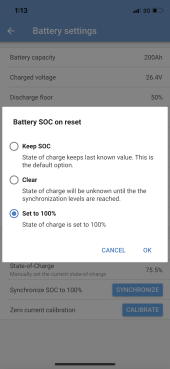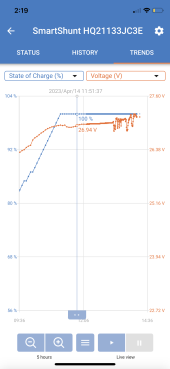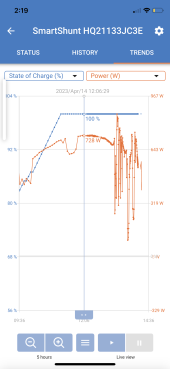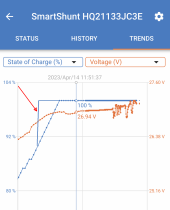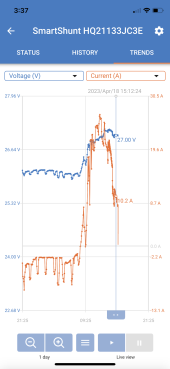savagecabbage
New Member
- Joined
- Dec 20, 2022
- Messages
- 9
Below is background info on my setup. Please see most recent thread post for Victron SmartShunt issue!!!
I recently purchased a small off-grid cabin setup and have been testing it this week. I'd appreciate any feedback on the controller settings and other considerations I may not be noticing.
Equipment: 900W solar, 80A EPEVER Solar Controller, Two 12V 200aH Ampere Time LiFePO4 batteries (in series), Giandel 4000W inverter

Load: Only laptops and Starlink internet for now. At the cabin, it will be two 15A circuits, one for lighting and one for outlets. A small efficient fridge and the 30W internet is the only constant load.
Location: Northern Baja Mexico (tons of sun)
Here are the controller settings:
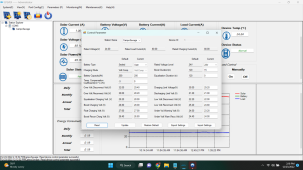
Here is the read-out during a charge from 26.0V (Boost Voltage) with almost a full day of sun, one earlier in the day (630W of solar at noon), one later (155W at 4pm):
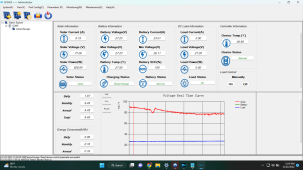
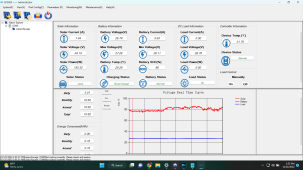
Here is the read-out soon after switching to Float Charge the next day (switch is at 28V):

Obviously the laptops and Starlink weren't enough to drain the batteries to see a full bulk cycle into float, so I disconnected the solar for a day to draw the batteries down a bit before recording these screenshots.
My main questions:
- How do my controller settings look for a safe charging cycle and long battery life?
- How does the controller sense SoC? When I drew down to 26V I was expecting the SoC to be around 30% but the controller read 85% at the beginning of the day, then quickly moved to near 100% well before boost voltage was reached (only a few hours into charging). Is it due to the controller not having a dedicated LiFePO4 setting and using voltage levels from lead-acid?
- Should I use a different circuit for lighting and go with a 12V system, or is the 10% in gains not worth the difficulty of lack of 12V lighting options?
Overall, I am happy with the bench testing of the system... if I need to expand capacity I'll probably just add two more batteries (2S2P), as I feel like the panels won't be the weak point of the system, it'll be night time capacity if anything.
Appreciate any feedback!
I recently purchased a small off-grid cabin setup and have been testing it this week. I'd appreciate any feedback on the controller settings and other considerations I may not be noticing.
Equipment: 900W solar, 80A EPEVER Solar Controller, Two 12V 200aH Ampere Time LiFePO4 batteries (in series), Giandel 4000W inverter

Load: Only laptops and Starlink internet for now. At the cabin, it will be two 15A circuits, one for lighting and one for outlets. A small efficient fridge and the 30W internet is the only constant load.
Location: Northern Baja Mexico (tons of sun)
Here are the controller settings:

Here is the read-out during a charge from 26.0V (Boost Voltage) with almost a full day of sun, one earlier in the day (630W of solar at noon), one later (155W at 4pm):


Here is the read-out soon after switching to Float Charge the next day (switch is at 28V):

Obviously the laptops and Starlink weren't enough to drain the batteries to see a full bulk cycle into float, so I disconnected the solar for a day to draw the batteries down a bit before recording these screenshots.
My main questions:
- How do my controller settings look for a safe charging cycle and long battery life?
- How does the controller sense SoC? When I drew down to 26V I was expecting the SoC to be around 30% but the controller read 85% at the beginning of the day, then quickly moved to near 100% well before boost voltage was reached (only a few hours into charging). Is it due to the controller not having a dedicated LiFePO4 setting and using voltage levels from lead-acid?
- Should I use a different circuit for lighting and go with a 12V system, or is the 10% in gains not worth the difficulty of lack of 12V lighting options?
Overall, I am happy with the bench testing of the system... if I need to expand capacity I'll probably just add two more batteries (2S2P), as I feel like the panels won't be the weak point of the system, it'll be night time capacity if anything.
Appreciate any feedback!
Attachments
Last edited:



